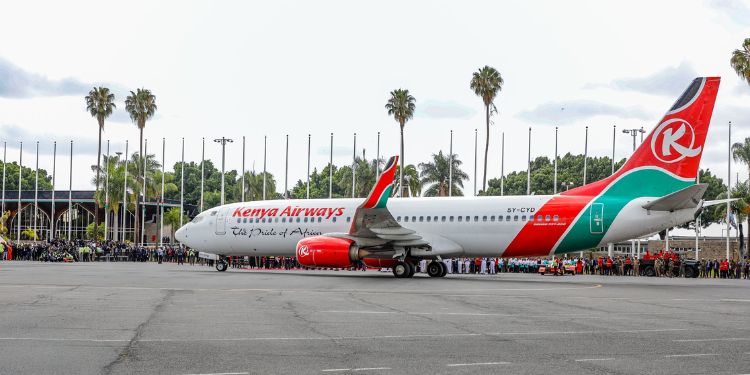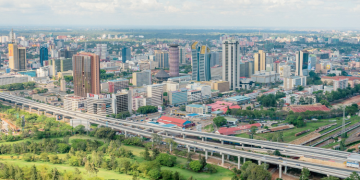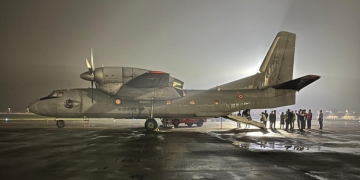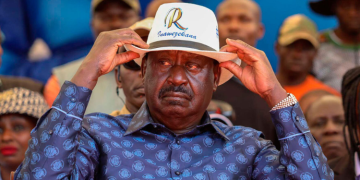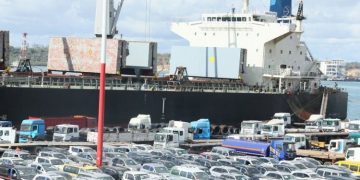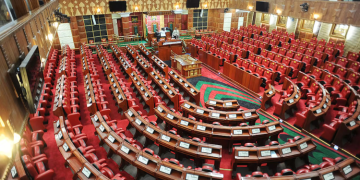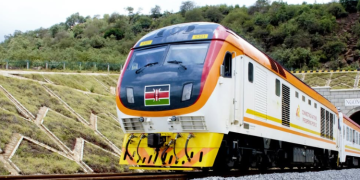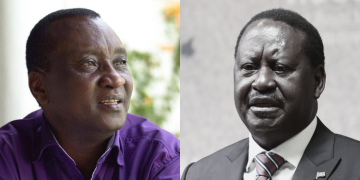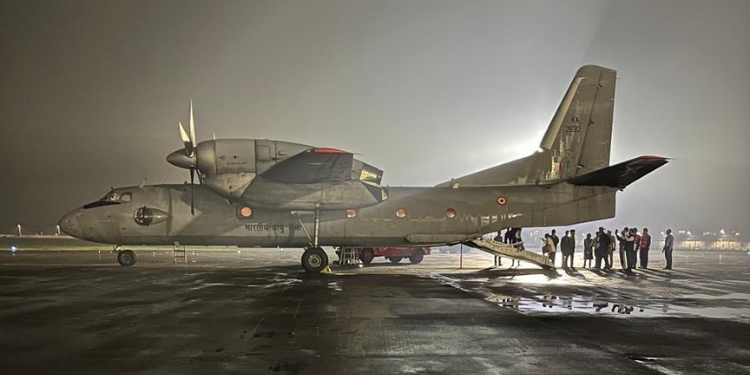The body of former Prime Minister Raila Odinga began its final journey home on the night of Wednesday, October 15, following a directive from Indian Prime Minister Narendra Modi.
Odinga’s body was flown from Kochi to Mumbai aboard a special Indian Air Force (IAF) aircraft before being repatriated to Kenya.
The transportation was arranged with urgency and full state honors after the former premier’s sudden death in Kochi, where he had been undergoing Ayurvedic treatment.
Kerala Governor Rajendra Vishwanath Arlekar, representing Prime Minister Modi, paid floral tributes to the late leader at Kochi International Airport, describing him as a “towering statesman and a cherished friend of India.”
The aircraft used to transport Raila’s body between Kochi and Mumbai was identified as the Antonov An-32, a twin-engine turboprop military transport aircraft operated by the Indian Air Force (IAF).
According to Air Force Technology, the An-32 has long been a dependable workhorse within India’s military aviation fleet, prized for its durability, high-altitude performance, and reliability in extreme conditions.
Originally developed by the Antonov Design Bureau in Ukraine, the An-32 is a modified version of the An-26, tailored specifically for India’s operational needs. The aircraft was designed to handle the hot temperatures and elevated terrains of regions such as the Himalayas. Its engines are mounted above the wings to enhance short takeoff and landing performance, even on unprepared airstrips.
Details of the Antonov An-32 aircraft
The An-32 is capable of carrying up to 7.5 tonnes of cargo and is well-suited for logistical missions, humanitarian relief, and tactical troop transport. It can also be configured to carry 50 passengers, 42 paratroopers, or up to 24 patients and three medical personnel in a medevac role. Its pressurized cabin, advanced cargo handling systems, and rear ramp make it ideal for missions requiring rapid loading and offloading.
Performance-wise, the aircraft cruises at approximately 470 km/h and reaches a maximum speed of around 530 km/h, with an operational range of up to 2,500 kilometres. Its service ceiling extends to 9,500 metres, enabling it to operate effectively over mountainous regions.
Also Read: Air India Plane with 242 On Board Crashes in Ahmedabad
India’s fleet includes around 100 An-32s, many of which have undergone significant upgrades under the An-32RE modernization program, which began in 2009. The $400 million overhaul project aimed to extend the aircraft’s operational life by up to 40 years. The upgrades, carried out initially in Ukraine and later at the IAF’s Kanpur facility, included modern avionics, navigation systems, communication equipment, and safety enhancements.
The cockpit of the An-32, which typically accommodates two pilots and a navigator, is equipped with modern displays such as the Garmin GMX-200 multifunctional display, Chelton EFIS (Electronic Flight Instrumentation System), and other Western and Eastern navigation and communication systems, including TCAS (Traffic Collision Avoidance System) and ELT (Emergency Locator Transmitter).
The aircraft is powered by two Ivchenko Progress AI-20DM turboprop engines, each producing over 3,800 kW of power. This power output allows the aircraft to handle rugged terrains, operate from short or semi-prepared runways, and sustain flight in extreme temperatures — reportedly up to 55°C.
While primarily used by the Indian Air Force, Air Force Technology notes that the An-32 has also been operated by the air forces of countries such as Afghanistan, Libya, Ukraine, Iraq, and Colombia. In total, more than 125 units were ordered by India alone.
The An-32 fleet has, however, faced operational risks despite its proven track record. In June 2019, an IAF An-32 went missing shortly after takeoff from Jorhat Air Force Station.
The wreckage was later found in Arunachal Pradesh, and all 13 personnel on board were confirmed dead, raising concerns about the aircraft’s aging fleet and the need for continuous safety upgrades. The An-32 production line was officially suspended in 2019, according to Believers IAS Academy.
Raila Odinga’s final journey
Odinga reportedly collapsed during a morning walk on Wednesday while receiving treatment at Devamatha Hospital in Koothattukulam, near Kochi. He was declared dead at 9:52 AM. He had been in India seeking Ayurvedic care in Kerala.
Also Read: DP Kindiki Announces When Raila Will be Buried and All Funeral Plans
The Kenyan High Commissioner to India, Peter Maina Munyiri, coordinated with local authorities and flew to Kerala to oversee the process. An inquest and postmortem were conducted at Ernakulam Government Medical College, after which his body was transported to Mumbai via the IAF Antonov An-32 aircraft.
Odinga’s remains arrived at Nairobi’s Jomo Kenyatta International Airport (JKIA) at 9:40 AM on Thursday aboard Kenya Airways flight KQ203. The flight, renamed RAO001 in honor of Raila Amolo Odinga, became the most tracked plane globally on FlightRadar24 during its journey.
The plane received a ceremonial water cannon salute upon landing. President William Ruto, Deputy President Kithure Kindiki, and senior political leaders received the casket, alongside family members.
Kenya Defense Forces (KDF) officers draped the national flag over the casket before it was wheeled out of the aircraft to chants and tears from mourners gathered at the airport.
Follow our WhatsApp Channel and X Account for real-time news updates.
